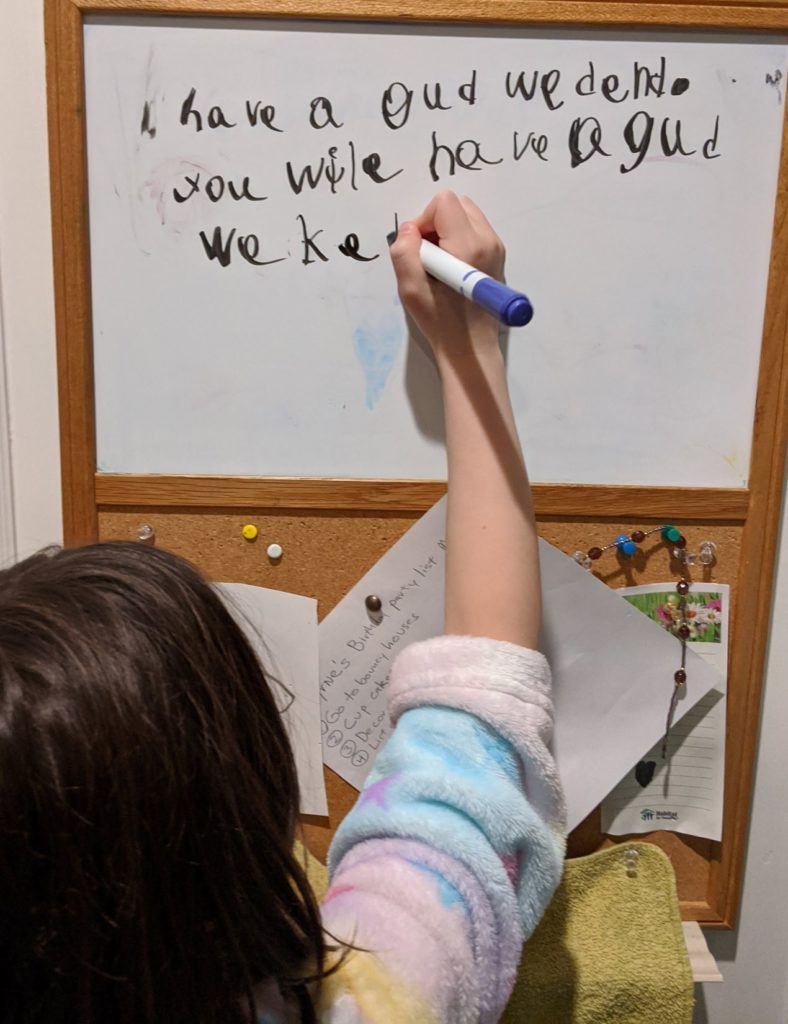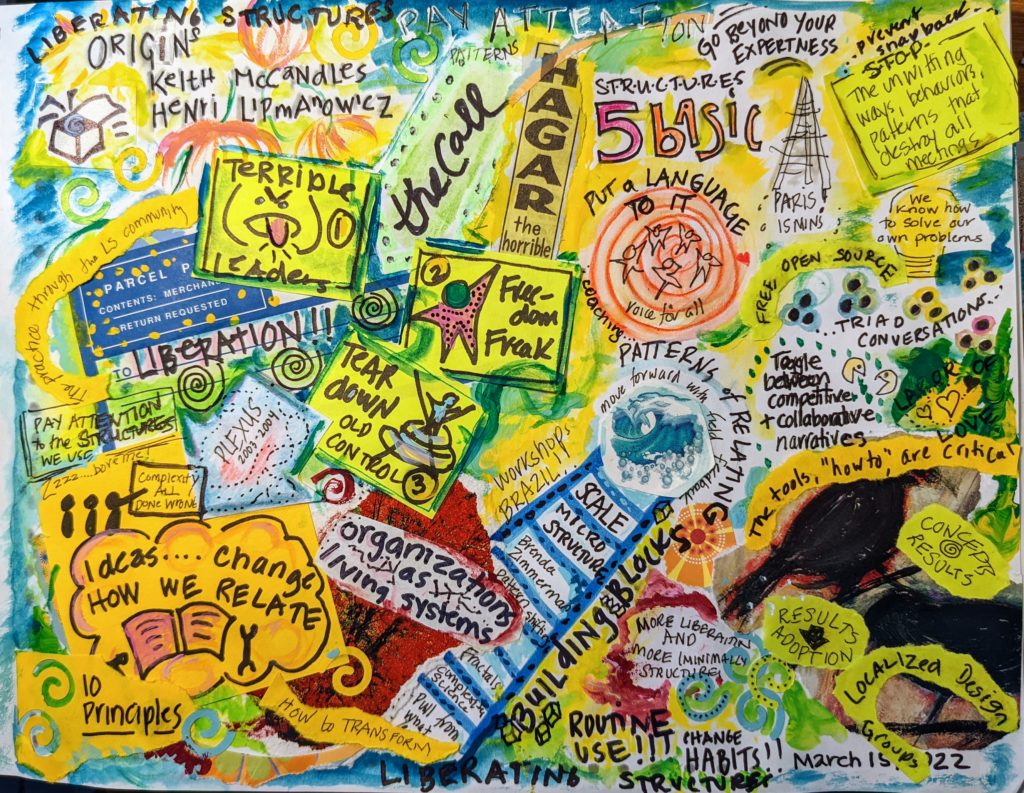Take into account that “last week” was in February 2014… And if I were writing this today, I would look deeply into creative destruction…
Last week I posted some comments on the dark side of facilitation (on the KM4Dev community list) which have now started to make the rounds of my friend’s blogs. That is an indicator of a couple of things. I have great friends (YES) and maybe I should write something about this on my blog!
First, the list I shared on KM4Dev, as part of a larger conversation on defining facilitation in the international development context.
“The real life and dark sides of a facilitator below. I’m sure there are a few people here who can add to this list. 
Nancy
- called in after everything is really messed up (tip: build relationships before client lists)
- is not briefed on the deeper, real and often problemmatic issues (“Oh, this is a fantastic group.” Right! Tip: develop a good set of questions to help discern the issues)
- is asked to facilitate, but not included in design of a (really bad) agenda (tip: refuse to do this unless the designer was brilliant!)
- runs into very interesting gender issues that are often unspoken, unrecognized (tip: pay attention to and make gender issues discussable)
- has to facilitate in really BAD rooms in large international organizations (chairs nailed to floor. tip: go outside.)
- sometimes is given great trust w/ sponsors and groups and all have a transformative experience. LIVES for these moments (tip: debrief: why was this so good? How can we do this again?)
- mistakes conflict as something that must be shut down (tip: conflict is often the flag that you hit a core issue. Use it generatively)
- sometimes crazy arrogant and drives to their own agenda (tip: self awareness is a facilitators best friend)
- does not build capacity in others (tip: co facilitate, mentor, give up control)
- actually facipulates (tip: be honest when your approach has any manipulative elements. Use that in your favor, transparently)
- leaves after the meeting so does not live the consequences (good, bad or otherwise) (tip: what about simple follow up… how are things going? What did we learn?)
- is not an integral part of the organization (tip: when hiring, hire at least SOME people with facilitation skills and talents. This should not always be an outside job! Let’s co-source, not outsource)
- is serving the sponsor, not the group (tip: power is always in play. Discuss and use it generatively. It is OK to challenge your client, and essential as a consultant.)
- works hard to facilitate listening but sometimes fails (tip: learn how you listen and always work hard. There are lots of ways to improve)
- doesn’t speak the local language and mistakes happen through interpretation (tip: first choice, hire facilitator who speaks the language. Second choice, have a more spacious agenda to really deal with meaning making across multiple languages.
- takes him/herself too seriously (tip: use fun. seriously!)
- has no repertoire or gets stuck in one approach/or is flip flopping all over the place (find the balance) (tip: always be learning. Invite your facilitees into that learning process. Build capacity all around)”
Ewen added some great stuff about the positives and dark sides of co-facilitation — and he knows of what he speaks because I’ve co-facilitated with him! I encourage you to read the post.
What both our lists surface is that facilitation, like anything else, holds tensions, dualities and can be idealized or mythologized to the point of uselessness. Dave Snowden often maligns facilitation/facilitators (a.k.a. “fluffy bunnies” ) and my sense is he is talking about that rather self-involved and idealized side of facilitation. I’m not!
Ewen quoted these as ways to navigate co-facilitation. I think they often apply to solo facilitation:
What does it take to overcome that dark side?
Shared experience: Knowing each other definitely helps – the more of a common history you have built with one another, the better it is as you know each other’s strengths and weaknesses and can co-design around this. Talk about it together and explore what you both enjoy doing (or not).
Co-creation and exploratory design: Grapple with the big picture together, toy around with objectives and translating them in work forms in an exploratory conversation, and when it comes to the details of who does what, fear not asking very practical, very silly-looking questions (“do I speak before or after you for the participant’s introduction?”, “After your summary comments do you want me to transition to the next session and announce coffee break?”).
Curiosity and openness: Embracing change and the unknown with an open mind is the key to joint facilitation, particularly if the latter involves dual improvisation (as it works on the principle of ‘yes AND’, not ‘yes BUT’…)
Generosity: Rather than play the card of keeping to one’s sessions and ideas, bring the other person along in your reflection, and show them you are interested in their ideas, in finding good ideas together. Who gets the credit doesn’t really matter, developing strong relationships by working hard on a joint initiative is a lot more important.
Joint reflection and an open heart, to discuss frankly what went well or not, much beyond blaming each other or uncritically praising each other or both (even though some sense of achievement can be really helpful in boosting the duo’s morale). In cases when you disagree on how the other ran a session, discuss it as soon as possible and reflect together. And if, at the end of the gig, there’s a consensus that the two facilitators can’t work each other, being conscious of that is also helpful for the future  though in most cases facilitators should be able to negotiate an amicable solution together, as that’s also our job isn’t it?
though in most cases facilitators should be able to negotiate an amicable solution together, as that’s also our job isn’t it?
Focus on the task at hand. At the end of the day, keeping in mind that you have to do a fine job at getting the best out of the participants and achieving objectives set (or whatever better pursuit was identified along the way).
Humour and talking in self-derision… this really talks to the examples that Nancy mentioned above and it will help focus on what really matters, i.e. not you as facilitators.
Once again, fun, focus and feedback seems like a winning formula!
So what keeps us out of that morass? Well, I have some insights as I fall into the morass now and again, and it is always a great moment of learning. As my own practice evolves, here are some of the questions I’m using to be a more self-aware facilitator.
- Where can we channel power and energy. I used to say “give it away” but that implies it has a steady or singular owner. It doesn’t.
- Where can we strategically use “private conversations in public” (Hat tip Neil McCarthy) to expose our own questions, uncertainty or missteps as both transparency, moments of learning and to open up the possibility of different ways forward?
- Where is it ok to use “performance art” in the process of facilitation and when does it mask things unproductively?
- When acting as an expert, be a fox, not a hedgehog. (Alas, broken link…)




